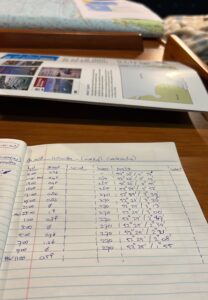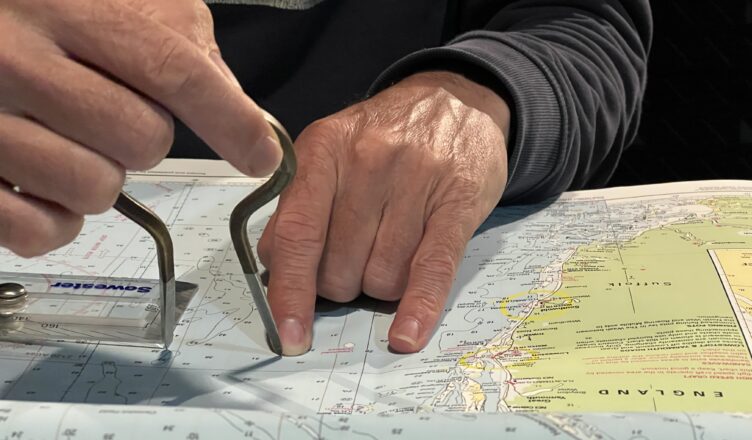When you like to be 24 hours at sea and really want to be off-shore, the course from IJmuiden to Lowestoft is perfect. The heading is mostly 270 degrees, just go a bit South from the TSS near IJmuiden. With a distance of a bit more than 100 NM even with as little of 4 knots it is feasible in 25 hours. It was my first time as skipper to do an overnight trip. I did al aspects separately earlier: overnight at sea as a deck hands, sailing in the dark (early mornings) in Friesland and the Waddenzee, sailing at the North Sea during the day. This will it bring all together. I am looking forward to it.
To be off-shore is not without risks. At least you have to be well prepared personally. Clothing for all conditions, even at night when it is cold; Plenty of food in all kinds of variations. At first it will be exhausting. Not so much sleep, physical challenges, maybe seasickness, etc. We prepared lunch and (cold) diner, but also had plenty of cakes, bars and so on. My experience is that you don’t want to be inside the cabin too often. So everything should be stored in a quick access location.
 The second preparation is the Voyage Planning. Actually the IMO has described this in their Guidelines for voyage planning. Although with a yacht not everything applies, however I usually do most of what is described anyway. So we made a schedule. First we had a look for the currents on the North Sea relative to hightide in Hoek van Holland and “added” the wind expectation to this and the global route (first south from the TSS, but north from the windfarm). We made a table for every 2 hours the expected time (European Summer Time), expected current, expected wind, heading to next position and finally the expected position according to plan. Also we allocated our watches. Especially the crossing of the shipping lanes were appointed to me, so those watches were done be me. Finally we stored the positions as waypoints in the plotter and did electronically check (course and time) with our manual calculations. This was also the backup (or the other way round). The current would bring us about 10 degrees out of course, which we would compensate for on the fly. When you don’t want to have a look at the plotter, because it is terrible weather for example, the table on paper is very helpful. Also I have a battery backup GPS.
The second preparation is the Voyage Planning. Actually the IMO has described this in their Guidelines for voyage planning. Although with a yacht not everything applies, however I usually do most of what is described anyway. So we made a schedule. First we had a look for the currents on the North Sea relative to hightide in Hoek van Holland and “added” the wind expectation to this and the global route (first south from the TSS, but north from the windfarm). We made a table for every 2 hours the expected time (European Summer Time), expected current, expected wind, heading to next position and finally the expected position according to plan. Also we allocated our watches. Especially the crossing of the shipping lanes were appointed to me, so those watches were done be me. Finally we stored the positions as waypoints in the plotter and did electronically check (course and time) with our manual calculations. This was also the backup (or the other way round). The current would bring us about 10 degrees out of course, which we would compensate for on the fly. When you don’t want to have a look at the plotter, because it is terrible weather for example, the table on paper is very helpful. Also I have a battery backup GPS.
This brings me to the last aspect of preparation. Have the devices been maintained and checked. The batteries (2x 105 Ah) are fully charged. The 60 liter diesel tank is filled up. The equipment can work seperatly. The VHF is fed with it’s own GPS and can display speed and course. The plotter has an internal GPS antenna and is fed with the LOG (speed through water) and DEPTH. Finally I have a portable (DSC) VHF with also GPS receiver and display. The watershed of the engine has checked. The navigation lights work. The batteries have enough capacity (when we leave the fridge off!).
One note to the preparations, which a did mostly at home. When you lease the country and enter another, you have to pass customs. For the UK it is necessary to have your ICP, proof of insurance and VAT paid. I made my crewlist (I will post a simplified template later on my site) and stored on my phone to inform Dutch customs that we would leave the county via IJmuiden. The British Border Force has their website to prepare your arrival: sPCR. I noted at home the minimum and maximum time in advance and when to inform whom.
We need to get up at 6:30 to change the genoa. It looks like we are all set.
